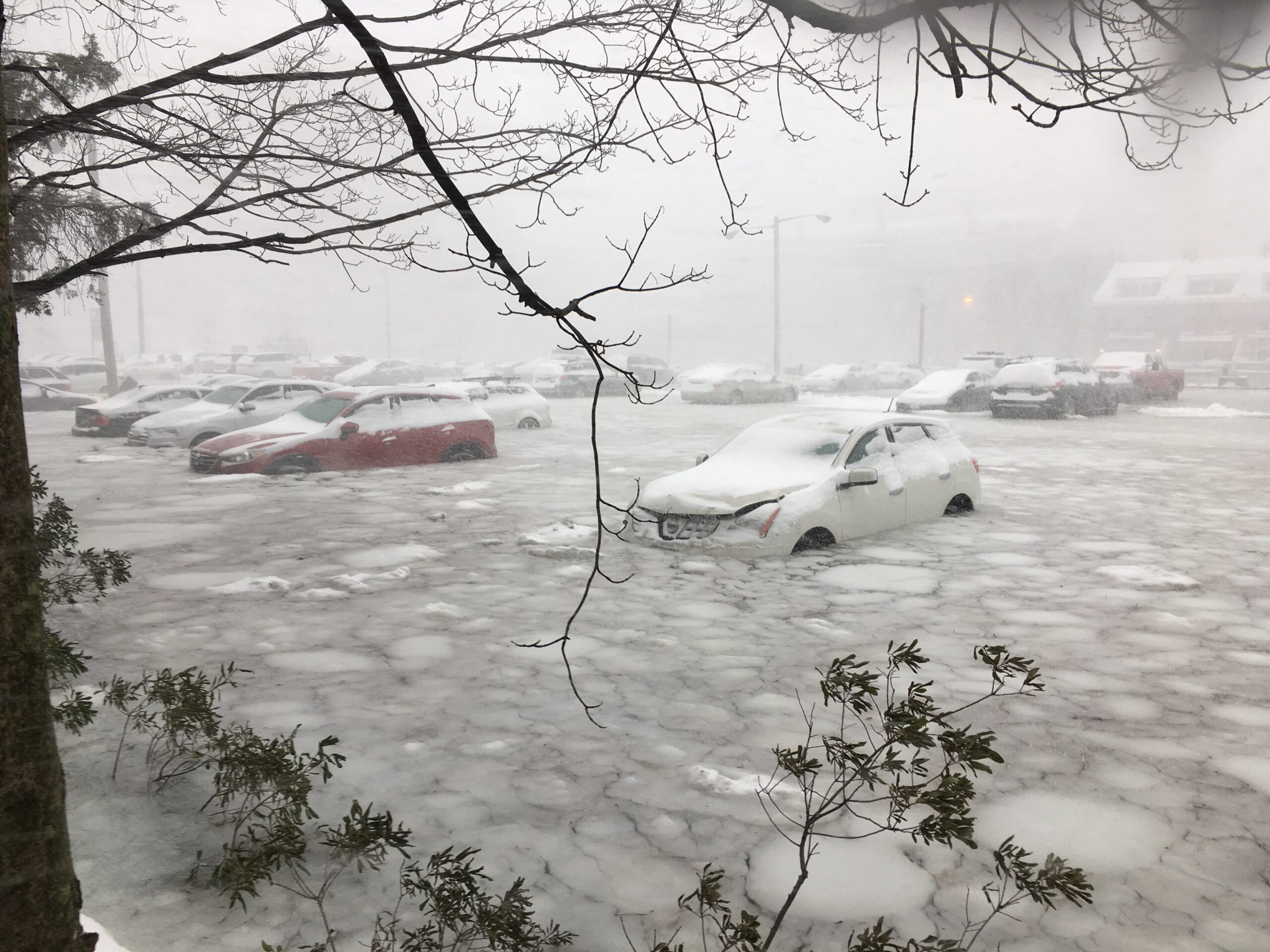After Hurricane Sandy, many noted that Boston got lucky. Had that storm hit our region five hours sooner, at high tide, the scenes of devastation from Atlantic City, Breezy Point, or Lower Manhattan would likely have been East Boston, Dorchester, and Charlestown. And, as we experienced with yesterday’s Nor’easter, bringing extreme and unprecedented flooding to Boston and up and down the coast, we cannot afford to continue depending on luck alone. We have a rare and urgent opportunity to protect this region from flood risks, extreme heat, and other climate impacts before, not after, we find ourselves in the crosshairs of the next super storm.
In December, Barr President Jim Canales announced the addition of Climate Resilience as a third focus area of Barr’s Climate program. He also shared the three initial strategies that will focus our efforts. Here, we provide further commentary on the rationale for these strategies, our funding priorities under each of them, and how we intend to approach this first year of expanded grantmaking.
Strategy #1: Build Awareness of Climate Impacts, Risks, and Resilience Strategies.
When cities face major climate-related events like hurricanes, wildfires, or heat waves, it can generate public and political will for action on climate resilience. Metro Boston is in the fortunate position of being able to prepare itself before such events occur. Yet, the urgency for action in our region is not yet widespread. Much needs to be done to build understanding of how vulnerable we are, how climate change can impact different communities in different ways, and what the best strategies are to increase our resilience. We recognize that for diverse constituencies to prioritize resilience, strategies to address climate vulnerabilities must be reflective of their values and priorities. To do this, we will:
- Strengthen the development of data and research that informs solutions that are equitable, relevant, timely and actionable. And, support research that highlights the connections between greater resilience and health, safety, economic opportunity, and other co-benefits that are important to communities.
- Increase public awareness and engagement through the use of interactive experiences such as apps, charrettes, and other opportunities that engage residents.
- Develop and disseminate value propositions (“why this matters to me”) that engage key stakeholders, including low-income and communities of color.
Strategy #2: Mobilize key constituencies to advance policy and implement resilience plans.
We believe when diverse constituencies are mobilized and collaborating across sectors to create common agendas for action, it accelerates policy change. In the interest of mobilizing and supporting coordinated action, our grantmaking will include the following three priorities:
- Strengthen leadership development and capacity of communities to inform local and regional climate-resilience planning, policy development, and implementation.
- Support professional networks of real estate developers, architects, landscapers, engineers, planners, and healthcare providers to encourage them to incorporate resilience into their work.
- Support advocacy organizations in their efforts to advance effective local and state-level resilience policies and regulations, and to ensure they are well implemented.
Strategy #3: Support Demonstration Projects that Integrate Resilience into the Fabric of Cities.
Climate resilience is most effective when it is integrated into all capital and infrastructure projects. To get there, we need tangible examples of resilient solutions that serve to protect our most vulnerable residents.At Barr, we believe one of philanthropy’s most important functions is to invest in demonstration projects that other municipalities can replicate. Our priorities for this third strategy are to:
- Transform Metro Boston into a model of urban resilience with real policies and district-scale resilience solutions. Such solutions can be tailored to meet the needs of geographically-targeted areas and integrated into local initiatives in ways that also advance co-benefits (e.g., provide access to quality green space and reduce air pollution). Examples could include creation of new overlays such as Heat Overlay Districts and Flood Protection Overlay Districts.
- Integrate Resilience into Capital Project Planning. Billions are spent annually on capital projects without consideration of how those projects could also be more climate resilient.We will look for strategic opportunities that help municipalities integrate climate resilience into their existing and new capital projects.
- Support the use of green infrastructure and other natural systems that manage storm water, mitigate heat and provide co-benefits to communities.
Resilience Priorities for 2018
In 2018, we will hire a new program officer who will oversee this expanded body of work. We expect our initial grantmaking to focus on initiatives and partners with whom we have already been engaged – such as Climate Ready Boston, the Green Ribbon Commission, and MAPC’s Metro Mayor’s Coalition. We may also support grantees in our Clean Energy and Mobility portfolios who have the capacity to integrate resilience into their ongoing efforts. We also have an interest in identifying new partners and opportunities beyond our current engagements and networks and will explore ways to solicit new ideas.To stay updated on Barr’s resilience activities and opportunities to partner with us, please click the button below to subscribe to updates.
We look forward to your partnership in this vital work.
Images from Boston, January 4, 2018:








